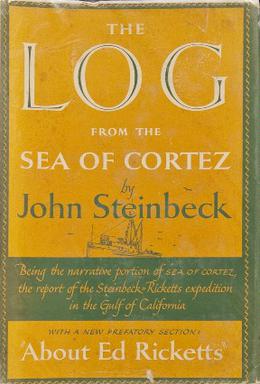It all started innocently enough, a good review of an old classic and then another and another, soon I was hooked. They are all free as I check them out from the library and few are in great demand so renewing was easy enough. I always know they are there and can go back and take the trip again if I desire. All of these titles are well written, some, like the Steinbeck and the Leigh-Fermor, are verging on masterpieces.
Let’s start at the first free one, “A visit to Don Otavio : A Traveler’s Tale from Mexico” by Sybille Bedford (which is available from the New York Review of Books bookstore. )

A wonderful escape from the mid-1940’s North to the timeless Mexican South as told by a great writer. Bedford isn’t a household name as some of these others are, but she is incredibly warm and human and gives her story a tension which pulls you in. From the NYReview summary:
Bedford doesn’t so much describe Mexico as take the reader there—in second-class motor buses over thousands of miles, through arid noons and frigid nights, successions of comida corrida, botched excursions to the coast, conversations recorded verbatim, hilarious observations, and fascinating digressions into murky histories
The second is by John Steinbeck – “The Log From the Sea of Cortez”

It is an impressive, lively book, written in a bold style and like the above, it occurred a bit earlier, in 1940, with the World War looming on the horizon. The only thing I skipped was some of the longer taxonomic notes, where Steinbeck lists the biology pulled from the sea in detail. The essay at the end on Ed Ricketts almost stands alone, the relationship between the two men is dramatic.
Number three is by Patric Leigh Fermor – “A Time of Gifts – On Foot to Constantinople: From the Hook of Holland to the Middle Danube”

Set in 1932, Fermor is just 18 years old and, armed with a passport stamped “STUDENT”, in December, he sets out on a walking adventure. As I write this, I’m only 2/3 of the way through the book, but it is so well written that I’m taking my time and reading or rather, savoring, a few pages at at time. It is nice to know the Fermor wrote this journey in three books, there is more to be read!
An interesting note, it seems he wrote and published this series in the 1970’s working from his travel notebooks and what must be a prodigious memory.
One thing all three authors have in common is the enormous amount of alcohol consumed by the writers and those in their company. Almost makes me want to get my rucksack, corkscrew, and head off – almost!
January 11, 2020
Just finished “Between the woods and the water : on foot to Constantinople : the Middle Danube to the Iron Gates”, Leigh Fermor’s second book in his trek from Holland to Constantinople. I’ve become such a fan of this series, I’ve bought a copy of all three for my son’s family. I can’t imagine what a teenager today might think of such a trek or, if they’d ever read such a book, but they will have them just in case.
There will be more …
I can’t wait to dig into the third book, “The Broken Road : from the Iron Gates to Mount Athos.”
Queued up is “Travels with Charley” by John Steinbeck.
And waiting at the Library: “Travels with a tangerine : a journey in the footnotes of Ibn Battutah” by Tim Mackintosh-Smith.
Note from our library; Abstract: In this captivating work, Arabic scholar and award-winning travel writer Tim Mackintosh-Smith traces the footsteps and spiritual journey of the 14th century’s Ibn Battutah, one of the greatest travelers in history. 40 illustrations. 3 maps.
Emily P.
Thank you for these mini-reviews. I find it especially poignant that Fermor wrote this in the 1970s by referring back to his notebooks from four decades earlier. Methinks that while some details may have been forgotten or mis-remembered, the book probably benefits from the author’s hindsight. Forty years is a long time for a person to digest the meaning of an experience and derive some wisdom out of it. Perhaps if he’d written and published the book too soon, it would have been very different, as it would have been coming from the perspective of a much younger man.
sergneri
Hi Emily, I just read in the last pages of the second book about his correspondence with his Mother and Father, where he was hoping his letters would give him more details on the trek. Regretfully, the trunk they were kept in was a casualty of WWII and were lost.
sergneri
I was just pondering the carbon dioxide I’m not producing by not visiting these places for real. Not that I don’t produce carbon dioxide and natural gas even sitting in my armchair, but the scale is different 8_).